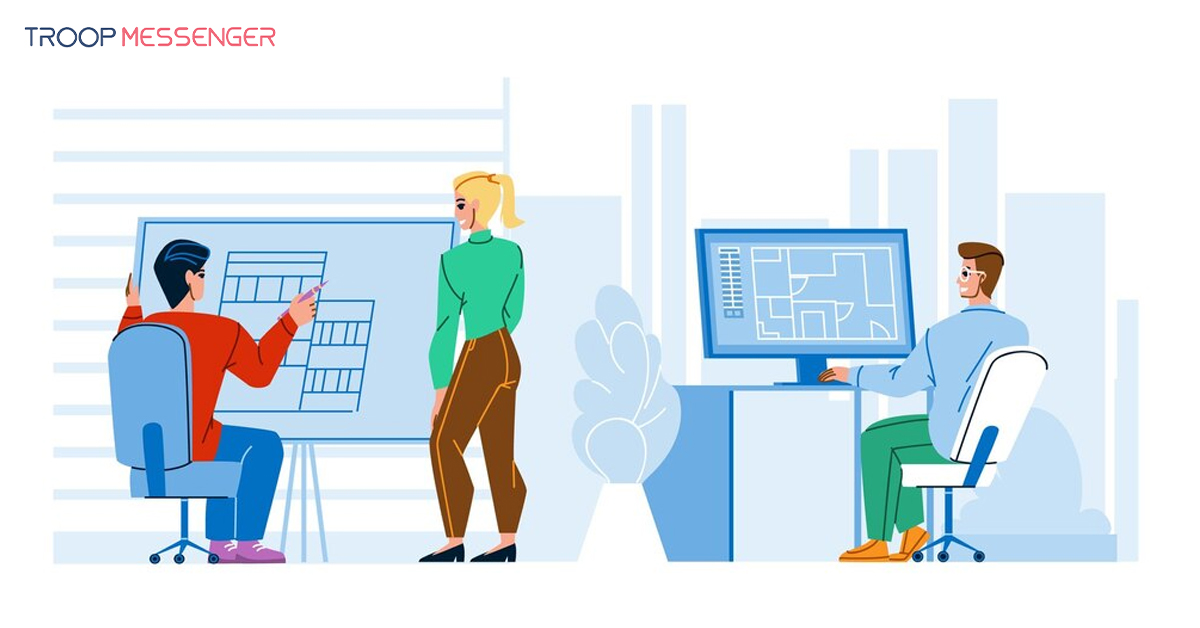Connect with us

How Product Designers Use CAD Workflows For Efficiency
Navigating the intricate world of product design requires tools that lend precision to creativity. As we delve deeper into the digital age, it's clear that Computer-Aided Design (CAD) has emerged as a trusted ally for designers.
Echoing a global digital shift, CAD tools are enabling designers to work more efficiently and bring their most ambitious concepts to life. The advent of this era has opened up an exciting chapter in product design – one infused with limitless potential and bolstered by CAD's transformative efficiency.
Let's explore how CAD workflows are redefining efficiency in the world of product design.
Table of Contents
- Unleashing Efficiency - The Role of CAD in Product Design
- Marrying Design and Technology - The CAD Workflow Revolution
- AI and CAD – A Dynamic Duo for Efficient Product Design
- Smarter, Faster, Better - CAD Boosts Design Productivity
- CAD Streamlines Product Designer's Tasks
- Designing on Cloud Nine - Embracing Flexibility With CAD
- Materializing Visions Through CAD
- Emphasizing Sustainability Using CAD Tools
- Mastering The Art Of Iteration - Revision Made Easy With CAD
- Fostering Collaboration In Design With CAD
- Wrapping Up
Unleashing Efficiency - The Role of CAD in Product Design
The magic of CAD resides in its unmatched ability to create, tweak, and visualize complex structures with simplicity. Unlike traditional approaches that often consume time and resources, CAD workflows streamline the design process dramatically.
Better yet, it's not just about being quicker - it’s about harnessing these rapid workflows to cultivate a higher level of precision too. With the real-time collaboration feature innate to most CAD tools, misinterpretations or misunderstandings in business communication are minimized.
Indeed, efficiency has been redefined completely through CAD's role in product design. Reducing complex tasks that took days into mere hours or even minutes is a remarkable stride forward for designers across industries.
Marrying Design and Technology - The CAD Workflow Revolution
The CAD revolution goes beyond just building designs; it's about bringing technology and creativity together. The advantages of this approach are manifold:
- Seamless Iterations: Gone are the days of starting from scratch for every design modification. CAD software allows for easy adaptations to existing designs through simple, intuitive toolsets.
- Collaborative Atmosphere: Team members can work concurrently on a design, communicating their edits in real-time, fostering healthy business communication.
- Flexibility Galore: With cloud-based tools like CAD, designers aren't bound by location or time restraints. It's design-on-the-go at its best.
- Improved Quality Control: Detailed 3D models generated by the CAD system can be thoroughly analyzed for any flaws before costly production begins.
The combination of technology with innovative thinking not only speeds up the process but also drastically enhances the quality of output - a true testament to the transformative power of CAD in modern design workflows.
AI and CAD – A Dynamic Duo for Efficient Product Design
Artificial Intelligence (AI) continues to reshape vast sectors of our digital economy, and its integration into CAD workflows is no exception. This union signifies a revolutionary step forward in product design. AI enhances CAD systems by automating some of the most complex aspects of design work, significantly reducing time and human error.
Moreover, AI offers predictive analysis which helps designers foresee potential issues, be it in the function or aesthetics of the design. It's like having a well-informed assistant who flags pitfalls before you stumble upon them.
Another notable advantage is how AI improves business communication within the design process. By reaping these benefits of AI CAD design, product designers can now focus more on innovating rather than managing repetitive tasks. With this dynamic duo in hand, they are set to deliver exceptional designs at remarkable speed.
Smarter, Faster, Better - CAD Boosts Design Productivity
CAD is not just another tool in a product designer's kit. It singles itself out as an efficiency booster that empowers designers to work smarter and faster. Here are a few ways how:
- Improved Accuracy: The precision of CAD enables designers to bring ideas to life with fewer errors, enhancing productivity, and reducing revisions.
- Time-saving Tools: With CAD's 3D modeling capabilities, designers can create realistic product prototypes in record time.
- Enhanced Collaboration: Real-time sharing and editing features foster more effective teamwork and smoother business communication.
- Eco-friendly Approach: Virtual prototyping eliminates the need for multiple physical models, thereby reducing waste and helping businesses be more sustainable.
The outcome? Higher productivity levels, faster turnaround times, plus a win for Mother Nature too - a winning formula brought about by incorporating CAD into workflows.
CAD Streamlines Product Designer's Tasks
Introducing CAD into a product designer's toolbox is like opening up a universe of possibilities. It surmounts traditional design barriers and introduces more efficient ways to upscale the design process.
For starters, CAD renders final designs in three dimensions, letting you perceive depth, proportion, and spatial relations in absolute clarity. This enhanced perspective proves invaluable when working on intricate designs that require precise detailing.
Additionally, CAD platforms come equipped with tools that simplify otherwise complex tasks such as scaling or mirroring objects. This means less effort spent on manual adjustments and more time invested in creatively refining designs.
Furthermore, these platforms provide effective business communication channels through which accurate and comprehensive design data can be shared between team members or third parties involved in production.
Designing on Cloud Nine - Embracing Flexibility With CAD
A designer knows no bounds, neither should their tools. With CAD, designers have the world at their fingertips as they can design from anywhere, at any time. As we know it, CAD tools merge flexibility with functionality to serve artists in the digital age. Connected to the cloud, these tools provide unlimited access to design documents and libraries of predefined components.
Additionally, mobile-compatible versions of popular CAD software are trending now. This means wherever your ideas spark, you can put them down in detail without waiting to get back to your workstation. It's as simple as logging into your account on a smartphone or tablet and picking up right where you left off.
With all the needed resources available online – drag-and-drop component libraries, drawing modules with pre-set values for ease of use - designing couldn't be more convenient. Thanks to portable yet powerful CAD platforms that embrace flexibility without compromising any utility.
Materializing Visions Through CAD
The ingenuity of CAD extends beyond the confines of your digital workspace. It's a crucial link chain connecting your vision with the tangible world of products. With CAD, you get exactly what you see.
Here's how it happens:
- Validity Check: You can validate your design against real-world standards and regulations within the software. This allows for quick revisions if necessary before actual production.
- Virtual Prototyping: You can build a complete working model of your product, viewing it from different angles, under different lighting conditions, and in various environments.
- Material Selection: Many CAD tools provide libraries full of different materials and finishes for you to try out on your prototypes instantly. You can visualize exactly how certain colors or finishes would look on your final product.
These features greatly reduce time spent in physical mockups and potential reworks due to design errors or mismatches, helpfully bringing visions into viable products efficiently.
Emphasizing Sustainability Using CAD Tools
In the face of global environmental challenges, product designers carry a unique responsibility. They have the power to influence sustainable practices at the very root of manufacturing and production processes. The introduction of CAD tools into this dynamic fosters eco-consciousness right from the planning stage.
By helping create virtual prototypes, CAD significantly reduces dependency on physical models. This results in less resource consumption, fewer pollutants, and less waste generated during product testing phases. It's cost-effective too since changes can be made virtually before anything physically exists.
With CAD simulations offering real-world performance estimations of a designed product, you can examine aspects like energy efficiency as well as durability under stress over time. This adds considerable weight to incorporating green features and attributes in the design stages.
Integrating CAD workflows makes sustainability an easily achievable goal in your product design journey by making better use of resources while producing less waste along the way.
Mastering The Art Of Iteration - Revision Made Easy With CAD
Revisions and modifications are an integral part of product design and quite often, they can pose substantial challenges. However, CAD workflows transform these daunting tasks into manageable segments by providing intuitive toolsets for easy alterations. Here's how:
- On-the-go Modifications: Last-minute design changes or sudden inspiration are no longer an issue. Thanks to the flexibility provided by CAD tools, adjustments can be initiated in just a few clicks and propagated throughout the entire model.
- Efficient Version Control: Keeping track of different versions of your design is made easier in a digital setup. You can save as many versions as needed without cluttering up your workspace.
- Easy Incorporation of Feedback: Constructive criticism is a vital ingredient for perfection. With CAD tools, you can quickly implement changes based on feedback from stakeholders or clients while maintaining a precise record of alterations over time.
In essence, embracing CAD workflows affords designers the freedom to experiment fearlessly without blowing their budget or schedule – indeed mastering the art of iteration gracefully.
Fostering Collaboration In Design With CAD
The journey from concept to completion in product design is seldom a solo effort. It's often the collective contribution of a team with diverse skill sets. Here, effective collaboration becomes crucial to execute an envisioned design successfully, and this is where CAD truly shines.
With shared digital workspaces, team members can simultaneously contribute their perspectives and ideas, regardless of geographical boundaries. This allows designers to visualize, understand other's viewpoints better, and respond swiftly – greatly reducing delays caused due to waiting for responses or awaiting approval.
Thus, embracing CAD workflows invites synergistic interactions among teams. It enhances the exchange of creativity and fosters effective business communication that amplifies the productivity of the design process manifold.
Wrapping Up
In conclusion, CAD workflows are a game-changer in the realm of product design. They enhance efficiency, promote collaboration, encourage sustainability, and simplify revisions. Equipped with this robust toolset, designers are empowered to create superior products while significantly reducing time and resources.
The marriage of technology with creativity fosters innovation and brings unprecedented precision to the design process. Ultimately, CAD is a potent ally for any product designer looking to streamline tasks and drive productivity to new horizons. As we march further into the digital age, the influence of CAD on product design only promises to grow more profound.





.jpg)


